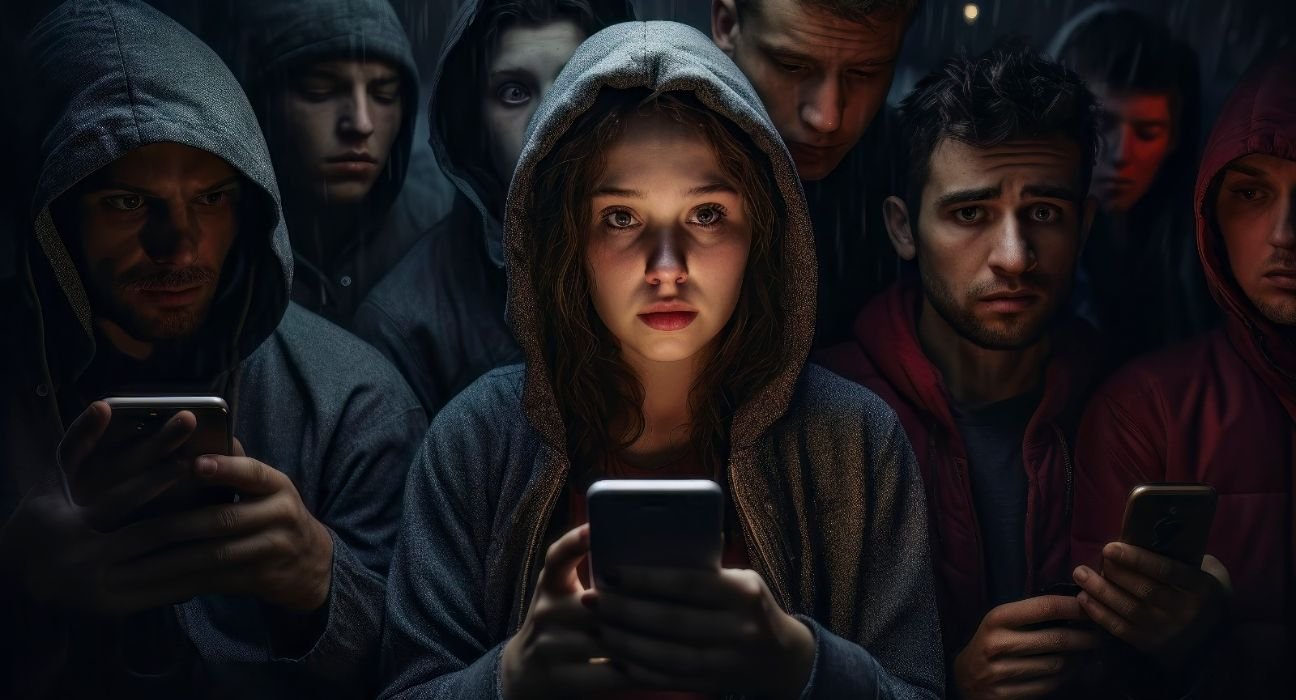Social Media crime has become the new dimension of cybercrime. The popularity of social media platforms such as Facebook, Twitter, Instagram, WhatsApp and Snapchat have transformed the way we understand and experience crime and victimization. According to NCRB-2017 data, cybercrimes have increased by 76.95% from year 2016 to 2017.
Today people are forming their opinions about crime from what they visualize through social media. This is causing a rise in the fake news which is circulated through social media. People are sharing information available in social media without cross-verifying it. Due to this, there is a high rise in the hate crime against people. People are getting killed by mobs on the basis of fake news.
Read More: How Social Media Affects Our Attention Span
Social media has upgraded the commission of cybercrime. Earlier a cyber-criminal used to target a single person but today the same criminal can target a huge population single-handedly. Victimization on social media platforms is also very common. Most of our lives are public today on social media while many are flamboyant and okay with sharing everything online. It is essential to have your privacy settings have to be set in such a way that individuals you don’t know can’t access your personal information. Also, it is not important to put our daily life and activities over the internet. It makes us vulnerable to potential cybercrime.
In one of the recent cases, a man named Banda Rupesh has been charged for the crime of ‘Revenge Porn’. It is an incident when a scorned and vindictive partner posts the nude and explicit photos or videos of another partner over the internet without his/her consent with the aim of humiliating them. In this case, Rupesh met a girl Ranjana in an engineering college and the two fell in love. But it didn’t worked out and after 6 years of breakup, Rupesh started blackmailing Ranjana with her nude pictures. Blinded by revenge he circulated the pictures on the internet and sent a CD of it to Ranjana’s in-laws. Rupesh was arrested but later released on bail Ranjana became just another victim of the growing case of Revenge Porn.
Read More: Kho Gaye Ham Kahan: A Dark Story of Social Media World
Similarly, a another man was arrested in May 2019 for cyberstalking and sexual harassment of his former intermediate classmate on social media. The woman had blocked the accused on WhatsApp and other social media handles for sending inappropriate and vulgar messages. The accused then created a fake Facebook account and posted pictures of women with sex-soliciting comments as status and collected money from some through e-wallets. The man did so because the woman had rejected his love proposal. This is a case of sexual harassment in electronic media by stalking. The man was arrested on the same case and later released on bail.
This behaviour can be explained by the ‘Space Transition Theory’ given by an Indian Criminologist K. Jai Shankar. This theory explains about the changes in one person’s behaviour when he/she moves from physical space to cyberspace or vice-versa. The change in the behavior results in conflicts which gradually causes the commission of crime. In layman’s terms, a person behaves completely differently in the physical world as compared to the cyber world due to various reasons such as ambiguity, disclosure of identity and many other factors which are explained in this theory.
Read More: Social Media Misuse And Its Impact On Personal Privacy
Psychology Behind the CyberCrime
The concept of De-individuation is one of the main factors for people committing cybercrime. De-individuation can be referred to as mob mentality. It occurs when a person becomes part of a crowd or group and then begins to lose their individual identity. They became unaware about themselves and their deeds. The more that the person becomes involved in the group the less self-awareness they have, which includes knowing their morals, characters, and beliefs. These things start to be replaced by the identity of the group.
Read More: How does social media materialism bring both stress and unhappiness?
The individual then begins to take on the morals and character that are held by the group as a whole. When a person becomes a part of such a group, he/she gradually loses their moral compass. Therefore, they are willing to do things that they would normally not do because they would know that it was wrong. Now, even though they ultimately know that it’s wrong they are still willing to do it anyway. When people become the part of such a group they become a part of it and do stuff which they don’t do in normal circumstances. For example: One of the accused of cybercrime from Jamtara said in his interview that he is committing this crime because other people are also doing the same in his locality and making good money and living a luxurious life.
This is the power of De-individuation. Other than that the process of visualization also contributes to cybercrime. People get attracted towards what they see rather then what they hear or imagine. The social media world is full of colours, it attracts the young people. Youngsters easily believe what they see on these online platforms. They love sharing their stories online and see what others are doing. And therefore they are getting exposed of been a potential victim of cybercrime.
Also, what we see has a great effect on the work we do. The Albert Bandura’s Bobo doll experiment is the an example of it. If a person sees violent things online e.g. hate videos, hardcore porn etc. It will surely affect its nature and thinking process. What we see is getting stored in our mind and our later actions are been affected by it.













Leave feedback about this